Mozu Mounded Tombs Visitor Center Exhibition Area
更新日:2025年6月10日
目次
Furuichi Mounded Tombs
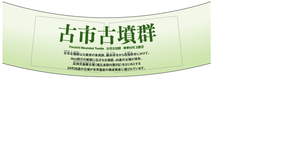
The Furuichi Mounded Tombs are a kofun group extending over a 4 km square area from Fujiidera City to Habikino City in southeast Osaka Prefecture. Kofun consisting of 24 component sites and 26 tombs, including Ojin-tenno-ryo Kofun (with the second longest central mound in Japan), have been selected as constituting elements of the world heritage Mozu-Furuichi Kofun Group.
Mozu-Furuichi Kofun Group compared to other burial mounds in the world
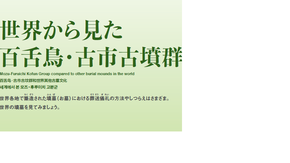
Methods and facilities for funerary rituals at burial mounds (tombs) built all over the world varied. Let’s look at burial mounds around the world.
The world's three largest burial mounds
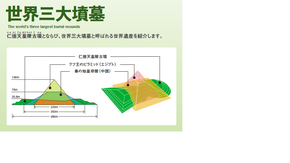
Here is an introduction to the World Heritage site called the world’s three largest burial mounds, along with Nintoku-tenno-ryo Kofun.
Mausoleum of the First Qin Emperor: People’s Republic of China
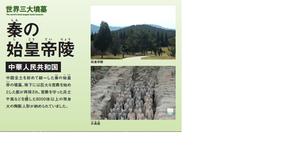
The burial mound of the first Qin emperor, who united all of China. The site recreates the capital city underground, including its enormous palace, and holds more than 8,000 life-size terracotta figures representing the soldiers and horses who protected the palace.
Pyramid of Khufu: Arab Republic of Egypt
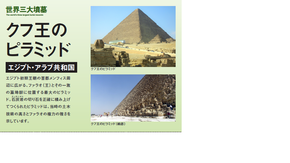
Stretching the vicinity of Memphis, the capital city of the early Egyptian dynasties, this is the largest pyramid situated among the series of tombs housing pharaohs (kings) and their families. The pyramid, made of precisely stacked, hewn limestone, shows the height of construction technology and power of the pharaoh at the time.
Kofun and other East Asian mounded tombs
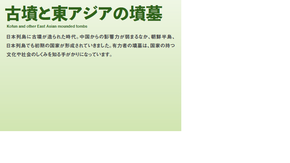
In the age when the kofun were built in the Japanese archipelago, the influence of China was weakening, and nations were in the early stages of being formed on the Korean peninsula and Japanese archipelago. The burial mounds of the elite have become clues to teach us about the cultures and social structure of those nations.
Burial mounds on the Chinese mainland
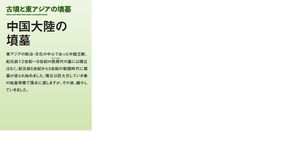
The Chinese dynasties were the political and cultural center of East Asia. There are no mounds among the tombs of the Western Zhou dynasty of the 12th to 8th centuries BCE, but burial mounds began to be built during the Warring States period of the 5th to 3rd centuries BCE. Mounds were growing more gigantic and reached their peak with the first Qin emperor, but they began decreasing in size thereafter.
Burial mounds on the Korean peninsula
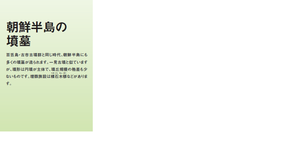
Many burial mounds were built on the Korean peninsula during the same period as the Mozu-Furuichi Kofun Group. They resemble kofun at a glance but are mainly round mounded tombs with little variation in mound size. There are burial facilities with wooden-chambered cairns.
Castle and Tomb Complex of Ancient Koguryo: People’s Republic of China
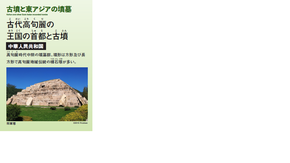
This tomb complex is from the middle period of the Koguryo kingdom. The square and rectangular tombs hold many traditional Koguryo cairns.
Tomb Complex of Koguryo: Democratic People’s Republic of Korea
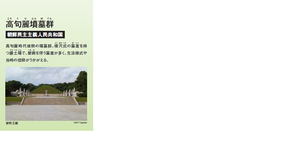
This tomb complex is from the late period of the Koguryo kingdom. The raised earth mounds have passage-style stone burial chambers, many of which feature murals that allow us to surmise the lifestyles and beliefs of the time.
Gyeongju Historic Areas: Republic of Korea
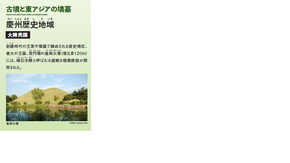
Palaces and burial mounds of the Silla dynasty comprise this historic district. The largest kingly tomb with double circular mounds, the Great Tomb of Hwangnam (with a mound length of 120 m), used complex burial facilities identified by their wooden-chambered cairns.
Baekje Historic Areas: Republic of Korea
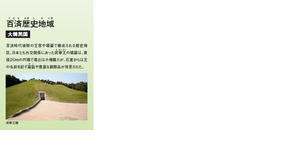
Palaces and burial mounds of the late Baekje kingdom comprise this historic district. The imperial tomb of King Muryeong, who had diplomatic relations with Japan, is a small, round mounded tomb 20 m in diameter, but an epitaph commemorating the name of the king and abundant grave goods have been discovered there.
Gaya Tumuli of Gimhae (Daeseong-dong Tumuli): Republic of Korea
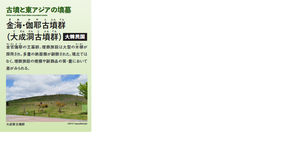
The Geumgwan Gaya kingly tombs. The burial facilities utilize large wooden chambers, and many types of ironware were buried. The mound size do not vary but the size of burial facilities as well as the quality and amount of grave goods do.
Daegaya Tumuli, Goryeong Jisan-dong: Republic of Korea
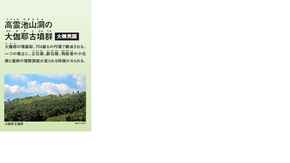
The Daegaya tomb complex comprises 704 round mounded tombs. They are characterized by several burial facilities built into one mound: a principal stone chamber, stone sub-chambers, and small stone chambers for human sacrifices.
Mozu Mounded Tombs

The Mozu Mounded Tombs are a kofun group (mounded tomb group) extending over a 4 km square area in northwestern Sakai City. 44 mounded tombs remain. Kofun consisting of 21 component sites and 23 tombs, including Nintoku-tenno-ryo Kofun, which boasts the longest central mound in Japan, and Richu-tenno-ryo Kofun (with the third longest central mound in Japan), have been selected as constituting elements of the world heritage Mozu-Furuichi Kofun Group.
World Heritage Site ”Mozu-Furuichi Kofun Group: Mounded Tombs of Ancient Japan
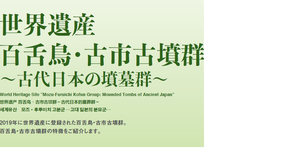
The Mozu-Furuichi Kofun Group was registered as a World Cultural Heritage site in 2019. Here is an introduction to the features of the Mozu-Furuichi Kofun Group.
What is World Heritage?
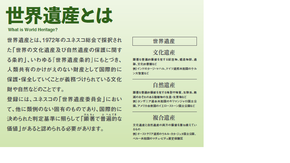
World Heritage sites are cultural or natural properties of which the protection and preservation are internationally mandated as irreplaceable assets to be shared by all mankind based on the “Convention Concerning the Protection of the World Cultural and Natural Heritage,” or “World Heritage Convention,” adopted at the UNESCO General Conference of 1972.
To be registered, sites must be recognized by the World Heritage Committee as unparalleled, characteristic properties of outstanding universal value according to internationally determined criteria.
What is the Mozu-Furuichi Kofun Group?
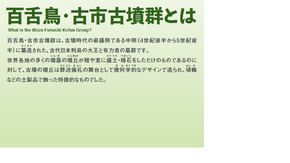
The Mozu-Furuichi Kofun Group is a tomb complex for kings and elites of the ancient Japanese archipelago, built in the middle Kofun period, which is the golden age of kofun (from the late 4th to late 5th centuries).
In contrast with many burial mounds all over the world that are just raised earth and piled stones with coffins and chambers, its kofun mounds were uniquely geometrically designed as stages for funerary rituals and decorated with clay artifacts such as haniwa (earthenware funerary sculptures).
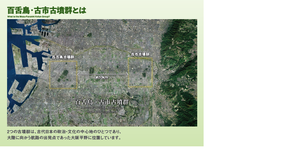
The two kofun groups were a central site of politics and culture in ancient Japan, located on the Osaka Plain, which was a point of departure for journeys to China and the Korean peninsula.
Learn about the Mozu-Furuichi Kofun Group: 3 features
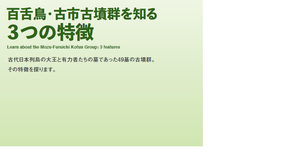
A kofun group with 49 tombs for kings and elites of the ancient Japanese archipelago. Let’s explore its features.
A wide range of types of mounded tombs grouped together
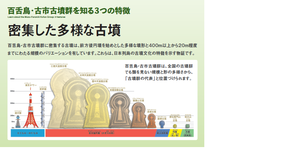
The kofun clustered in the Mozu-Furuichi Kofun Group take a range of shapes, including keyhole-shaped burial mounds, and vary in size from more than 400 m to around 20 m. These tombs exhibit the characteristics of the kofun culture of the Japanese archipelago.
The Mozu-Furuichi Kofun Group is ranked as an exemplary mounded tomb group in Japan because of the unparalleled range of sizes and shapes of its kofun.
Four kofun shapes
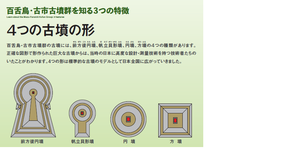
There are four types of kofun in the Mozu-Furuichi Kofun Group: keyhole, scallop shell, round, and square. We know Japan had engineers with advanced design and measurement skills in those days because of these giant tombs formed with accurate shapes. These four shapes spread throughout Japan as standard kofun models.
Models of tomb shapes in the early Kofun period
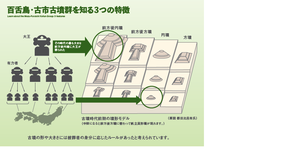
Kings are buried in the era’s largest keyhole-shaped mounded tombs.
There is believed to have been a rule by which the shape and scale of a kofun corresponded to the status of the buried person.
Stages for ancient funerary rituals
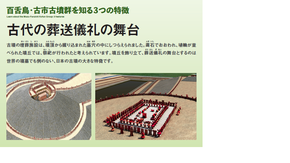
Kofun burial facilities were installed in pits dug from the top of the tombs. Rituals are thought to have been held on the mounds lined with haniwa clay figures and covered with paving stones. Embellishing the mounds and using them as a stage for funerary rituals has no precedent elsewhere in the world and is a distinct trait of Japanese kofun.
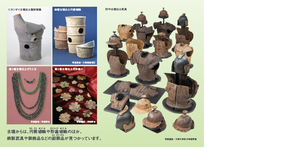
Besides cylindrical haniwa and representational haniwa, grave goods such as iron armor and ornaments have been discovered in the mounded tombs.
Walk around the kofun
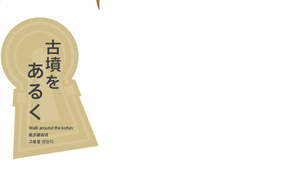
the place of worship
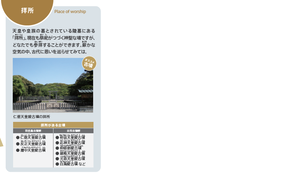
The place of worship in the imperial tomb housing the emperor and his family. This is a sacred space where rituals continue into contemporary times, but now anyone can visit. Why not let your thoughts wander to ancient times amid the solemn atmosphere?
Climb the kofun mounds
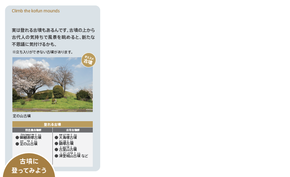
There are actually kofun you can climb. Overlooking the scenery from the top of a burial mound while feeling like one of the ancients may open your eyes to new mysteries.
*Some kofun areas cannot be entered.
Experience the changes the different seasons bring
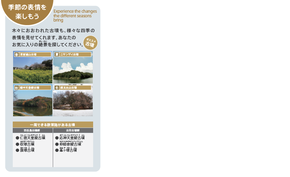
Tree-covered kofun convey a different appearance for each season. Find your favorite scenic view.
Take in the sights from the top, the side and from a variety of other positions

Try looking from various angles, such as from outside the moat or slightly above.
Visit the satellite tombs
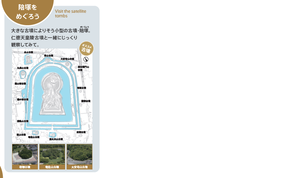
Small kofun and satellite tombs nestled around the larger kofun. Take your time to observe them along with Nintoku-tenno-ryo Kofun.
Questions about kofun
What actually are kofun?
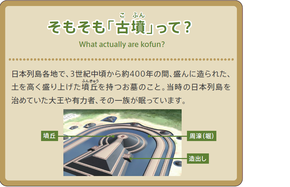
They are tombs with mounds of earth piled high, frequently built throughout the Japanese archipelago for 400 years from the mid-3rd century. The great kings and elites who governed the Japanese archipelago at the time rest here with their families.
Who names kofun?
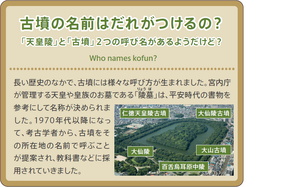
Various names for kofun have arisen during their long history. The title of ryobo (“imperial tomb”) for the tombs of the emperors and imperial families managed by the Imperial Household Agency was determined by consulting books of the Heian period. Since the 1970s, archaeologists have proposed naming kofun for their locations, and textbooks have adopted this method.
Why were so many large kofun built?
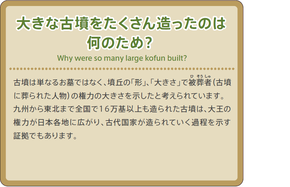
Kofun are believed to be not merely tombs but locations that demonstrate the greatness of the people buried in them through the shape and scale of their mounds.
The more than 160,000 kofun built across Japan from Kyushu to Tohoku demonstrate evidence of the process of disseminating the power of great kings throughout the country and building an ancient nation.
What shapes do kofun take?
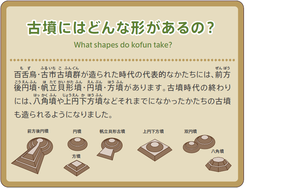
The representative shapes of the era in which the Mozu-Furuichi Kofun Group was built are keyhole, scallop shell, round, and square. Many differently shaped kofun, such as octagonal mounded tombs and square, flat-based mounded tombs with round tops, came to be built at the end of the Kofun period.
What can we discover from kofun?
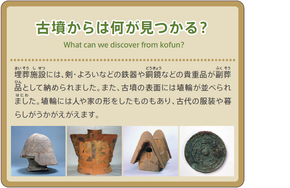
Treasures including ironware, such as double-edged swords and armor, as well as bronze mirrors were placed in the burial facilities as grave goods. Haniwa clay figures also lined the surface of the mounded tombs. There are haniwa shaped like people and houses that tell us about ancient clothing and life circumstances.
Largest kofun by region (Middle Kofun period)
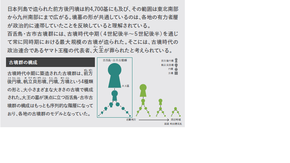
There are up to 4,700 keyhole-shaped mounded tombs built on the Japanese archipelago, stretching from southern Tohoku to southern Kyushu. The common shapes of the burial mounds are understood as a reflection of the connections between members of the elite class throughout Japan.
The largest kofun for the Middle Kofun period (the second half of the 4th century to the second half of the 5th century) were always built in the Mozu-Furuichi Kofun Group throughout that period. Representatives and great kings of the Kofun period’s Yamato Kingly Power political alliance are thought to have been buried there.
Large and small kofun of different scale and of four types of shapes—keyhole, scallop shell, round, and square—comprise the kofun groups built in the Middle Kofun period. The composition of the Mozu-Furuichi Kofun Group, which places the tombs of great kings at the top, was the most hierarchical and became a model for mounded tomb groups all over Japan.
このページの作成担当
文化観光局 歴史遺産活用部 世界遺産課
電話番号:072-228-7014
ファクス:072-228-7251
〒590-0078 堺市堺区南瓦町3番1号 堺市役所高層館5階
このページの作成担当にメールを送る